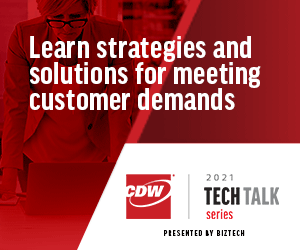HPE Servers Are Leveraging the AI for Business Outcomes
HPE has incorporated AI into the design of their servers in ways that can provide users with peace of mind.
The servers include features made available by HPE’s server management platform, Integrated Lights Out (ILO). “You can set up things such as daily firmware checks, where your server’s going out checking the essential firmware components once a day. And this is going to happen automatically once you set it up,” said Whipple.
That kind of automated feature allows its users to rest easy, knowing their servers are performing daily firmware checks “and making sure they haven’t been altered,” he said. “And, in the unlikely event that one of those pieces of firmware is altered, once you go in and set it up, you can have it automatically recover or flash that firmware to the last known good state.”
In addition, HPE servers are equipped with InfoSight, which Whipple described as a powerful AI tool. “It pulls together our servers and our infrastructure from all across the world. It’s going to use those advanced analytics, and it’s going to look for common issues that are occurring. And once it finds those common issues, it’s going to figure out what the patch or the solution is.” Once it has identified the solution, InfoSight can roll it out or apply a patch to all of the servers in the global network.
“AI is continually learning. It’s studying the servers, and it’s going to go out and automatically resolve 86 percent of issues,” Whipple said.
HPE Adds New Elements in Its Approach to Zero-Trust Security
HPE claims it is redefining zero-trust security “from the inside out. By embedding a digital fingerprint — we’re talking all the way down to the silicon layer — we’re building trust into the very heart of your business.”
According to a video Whipple shared promoting the use of HPE technology to protect against supply chain attacks, “protecting your data really starts with knowing where and how your technology is made, and only HPE Trusted Supply Chain secures your data long before your server is ever assembled, by ensuring everyone who comes into contact with it, from factory floor to boot-up, is vetted and verified to the world’s toughest security standards and facilities.”
“With AI monitoring thousands of devices across all your data centers, clouds and edges, HPE security helps to identify and resolve issues quickly, preventing problems before they can impact your business, protecting against a vanishing security perimeter, and giving attackers nowhere to turn,” the video concluded.













